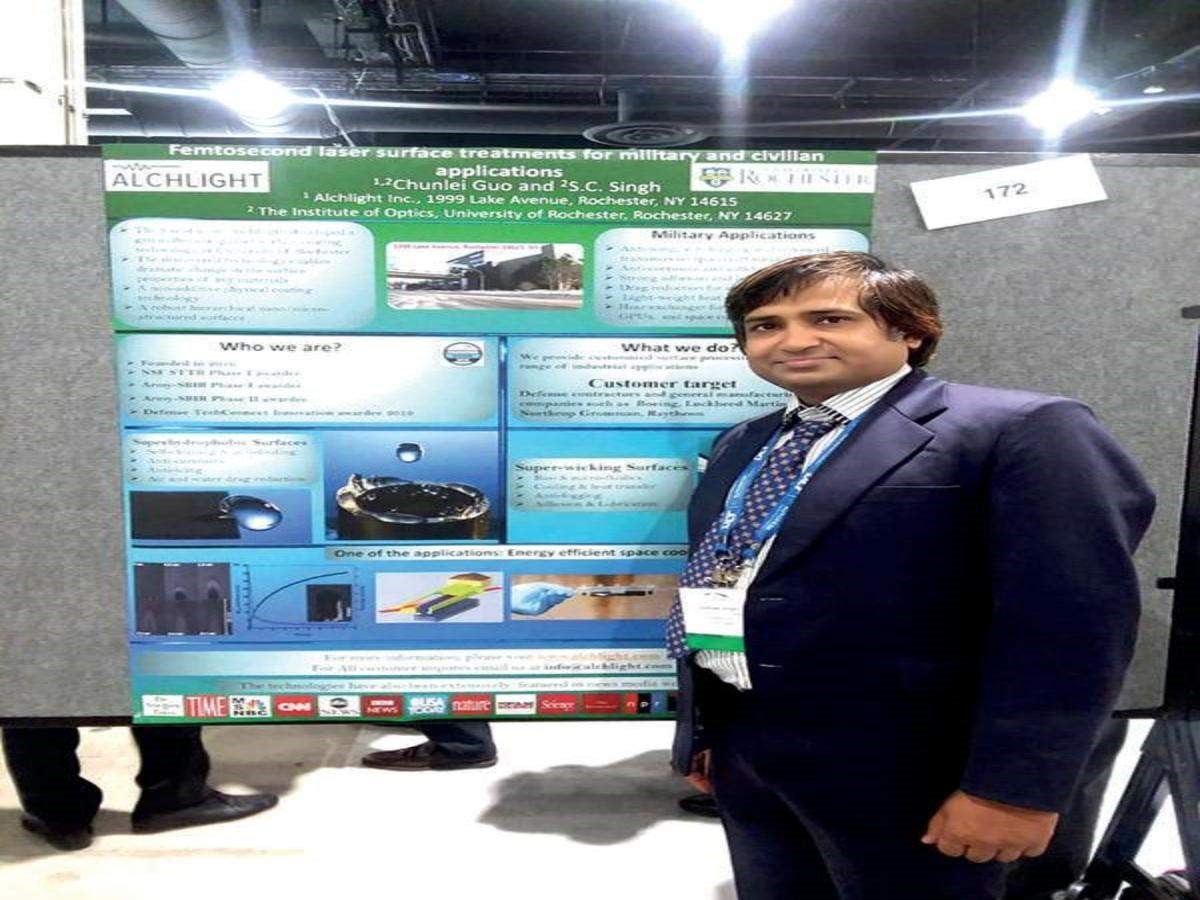您想继续阅读英文文章还
是切换到中文?
是切换到中文?

THINK ALUMINIUM THINK AL CIRCLE

An Indian University alumnus innovation potentially offers a solution to the problem of lack of potable water in the world, which states several lives globally every year. A former Allahabad University student Subhash Chandra Singh is part of a team of researchers from University of Rochester, New York, that has developed a technology which turns a piece of aluminium into a water purification device with the help of solar energy.

After completing PhD from AU, he is now a post-doctoral scholar at the American University.
Subhash said: “In the technology when a piece of aluminium comes in contact with quick laser light, it turns it into a super-wicking, superlight-absorbing and a super-water-evaporating surface which removes all the dirt and impurities from water.”
“Factors like industrialisation, increasing population and climate change have aggravated the global water crisis. One in every nine persons does not have access to clean water today around the world. About 2.5 billion people do not have access to adequate sanitation and every minute a child dies from a water-related disease,” said Singh.
He added: “A solution to this problem is to recycle wastewater and make it potable in a way which is similar to how nature purifies water in a drain cycle. In the natural process, dirty water from the earth vaporises, condenses into clouds and, finally precipitates and falls on earth as rain via natural distillation. However, the natural rain cycle is very slow and uncontrolled. It cannot supply fresh water as and when needed by humans.”
The Indian scholar explained that a good alternative would be to use the solar-thermal distillation process, which can provide enough freshwater. “We developed the technology using the same principle. In this technology, a burst of pulsed laser drills an array of micro-capillaries and turns the aluminium into a pitch-black surface. This surface pulls a thin layer of water to wet its surface through capillary effect. Thus, almost 100 % of the produced heat gets supplied to the water film on the panel surface and helps the water evaporate. The heat localisation on the panel’s surface and a change in the chemical bonding of the water molecules speed up the evaporation process by more than 20 times as compared to the natural process using the same amount of solar energy.”
A one-meter square area of the device can produce 24 -64 litre of clean water with contaminant levels 10-100 times below the World Health Organisation’s standard for safe drinkable water.
“The invented device purifies water of heavy metals, salts, detergents, urea, chemicals, dyes, and bacteria. As contaminants such as virus crystals cannot vaporise, therefore the developed system might have the potential to purify water contaminated with Covid-19 and other viruses,” said Singh
Responses








